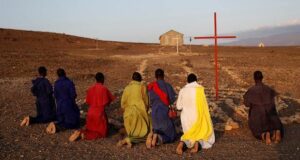Across the nation, “vaccine deserts” are coming to light. While many of those remain in rural areas, the state of Missouri is addressing the issue in Kansas City and St. Louis, which still have little or no access to COVID-19 vaccines.
Deloitte Consulting discussed its findings during a meeting of Missouri’s Advisory Committee on Equitable COVID Vaccine Distribution. Deloitte’s analysis, based on data from Jan. 18, suggests a growing inequity in vaccine access within North St. Louis and the city center as well as the I-435 corridor in Kansas City.
Those areas have become “much more of a have-and-have-not type of situation where there’s a vast dichotomy between access and no access,” said Andrew Miller, who presented the findings on behalf of Deloitte, a global consulting firm with offices in Missouri that has been paid nearly $600,000 by the state in fiscal year 2021.
In some areas of Kansas City, vaccine deserts are seven miles from the nearest provider. While some areas of St. Louis identified as vaccine deserts are within a mile or two of a provider, the high density of residents may make access more difficult and “it might be a little trickier to find new locations to provide access points,” Miller said. “So this may require some solutions that are maybe non-traditional.”
In addition to growing vaccine deserts in the Kansas City and St. Louis metros, new vaccine deserts also have arisen in Weston in Platte County and Piedmont in Wayne County. However, Miller said, nearby towns in both areas have vaccine providers, which may be able to help increase access as they receive vaccine. Meanwhile, previously identified vaccine deserts in Boonville, Owensville and Hayti have dissipated since an earlier analysis of data was conducted in late December.
When the analysis combined data on vaccine deserts with areas that have a high likelihood of residents with at least one comorbidity, nearly all of the most vulnerable areas were in St. Louis or Kansas City. Other areas were found to the east and west of Columbia, near St. Joseph and southeast of Joplin.
Adam Crumbliss, director of the Department of Health and Senior Services’ Division of Community and Public Health, said the state is taking into account the analysis to focus resources on areas with the biggest gaps.
–Dwight Widaman | Metro Voice
 Metro Voice News Celebrating Faith, Family & Community
Metro Voice News Celebrating Faith, Family & Community 







